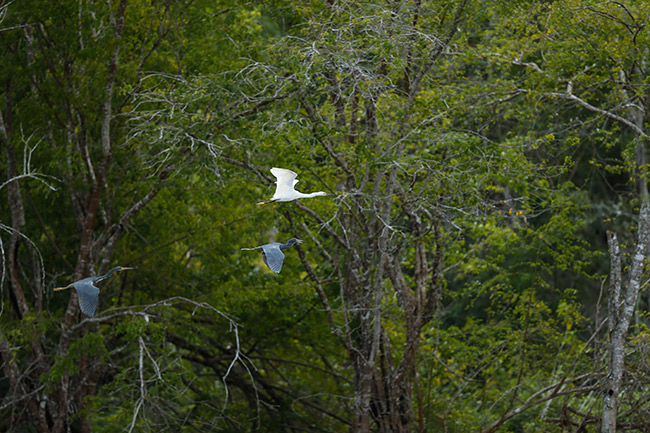Posted February 11, 2019
After 3 months of posting close-up photos of the diversity of wasp, bee, and arboreal ant nest structures at Parque Nacional Yaxha Nakum Naranjo, we will now return to waterbirds.
Waterbirds are photogenic, and important for Maya archaeologists and epigraphers because waterbirds are often pictured on polychrome plates, vases, and bowls, and as lid-handles on earlier basal flange bowls or tetrapods. Waterbirds are also pictured on Maya carved stone stelae, murals, codices, Mayan hieroglyphs, etc.
Today we show a unique photograph of three different waterbird species all flying at the same time.
Snowy Egret is very easy to find around Lake Yaxha: every month so far: August, September, October, November, December, and January (yes, we have made six field trips here since there are so many birds worth photographing). We are preparing bird lists for the PNYNN and for all the local guides. But every month there are additional birds, so we still have six more monthsto return each month to take notes.
Little Blue Heron, Egretta caerulea is present many months of the year, but not as easy to spot. Same for Egretta tricolor, Tricolored Heron: tough to find unless you are patient. To see three Egretta species flying in unison is rare. To capture at least two of the birds nicely focused, and all NICELY ILLUMINATED with natural light is even less seen. Thus our compliments to Mariale Gutierrez (FLAAR Mesoamerica).
She captured this remarkable view: Canon EOS-1D X Mark II camera, lens Canon EF300mm f/2.8L IS II USM, settings: Speed 1/1250, ISO 400, f/2.8,; no tripod (photographed from a boat courtesy of PNYNN administration).
Bird identification is by Elena Siekavizza. It really helps to be able to see the different color of the feet of the two “dark blue birds.”
Come back to visit our www.Maya-ethnozoology.org every week since we will be showing a lot more waterbird and shorebird (wading bird) species.
























